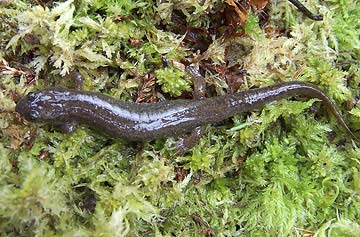A Conservation Work Summary from The Farm at Sunnyside
By: Amos S. Eno
Posted on:07/10/2012 Updated:07/13/2012Counting Salamanders and Photographing Mammals
With the publication of their first year-end Conservation Work Summary, “The Farm at Sunnyside” - located in Rappahannock County, Virginia - has entered a new era since the last time we visited. “Our goal,” says owner Nick Lapham, “is to describe our efforts toward a comprehensive conservation program on an Eastern piedmont farm, conducted in a systematic and scientifically grounded way.”
Counting Salamanders
“We’ve set the stage for long-term monitoring of environmental conditions by installing a high quality weather station and developing protocols for sampling ponds, streams and soils. We’re also working on a complete inventory of species occurring at the property.” Thus far, the Farm has amassed a rich baseline for birds, mammals, herps (amphibians & reptiles) and plants, but Nick says “we have a long way to go on the invertebrates!”

Nick hired Sam Quinn, a biologist with a background in herpetology, to guide these efforts, and guess what? Sam has already discovered something interesting about the salamanders in the small spring-fed streams that run through the property.
One stream harbors five species of salamander. Yet they discovered that after a slight detour through a neighboring property, passing through a section where cattle are allowed access to the creek, the waters downstream lack amphibians. “You can see that the stream is loaded with salamanders, but when it comes back onto the property, there’s not one to be found,” Nick states succinctly. “We also see a notable decrease in water quality with higher total dissolved solids and conductivity readings.” While Nick won’t say for certain that the cattle are the culprit, the signs certainly point strongly in that direction.
45 out of 422 Acres
Using camera traps, Sam has documented robust populations of black bears and bobcats roaming the forested pieces of the property. The Farm’s small mammal trapping appears to demonstrate that their recent native warm season grass plantings host the highest species diversity while also supporting northern bobwhite quail and numerous other bird species.
Of its total 422 acres, the Farm dedicates 45 to the production of certified organic vegetables and fruits: tomatoes, squash, peppers, onions, beets, kale, chard, blackberries, Asian pears, sweet cherries, peaches and countless other crops. They manage the remainder for biodiversity and beneficial environmental services as a goal in its own right and also in service of furthering their agricultural efforts (e.g., by improving water quality and quantity, reducing erosion, enhancing pollination and increasing populations of species that prey on insect pests). Specific programs include:
-
provide nest boxes for birds and pollinating orchard mason bees;
-
control invasive species, including ailanthus trees and Japanese honeysuckle;
-
plant native shrubs and trees; and
-
establish native warm season grass and wildflower habitats.
 Sign In
Sign In
 Sign In
Sign In
